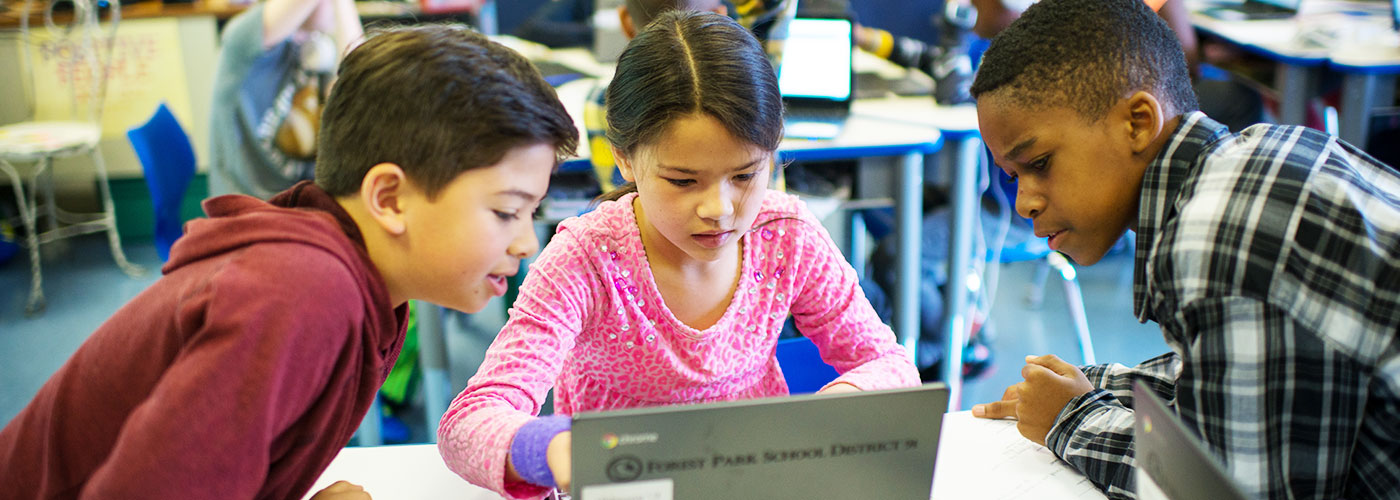By 2020, the United States economy will support 123 million high-skilled and high-wage jobs, yet only 50 million people will be qualified to fill those roles.
Such a vast skills gap is a product of the achievement gap in the country, defined as persistent disparity in academic performance between different groups of students. Half of minority students do not pass their exams and graduate from high school on time. In fact, in the past 50 years, the achievement gap between white and black students has hardly budged.
According to Eileen Murphy, “We can’t have this level of illiteracy as a country and think we’re going to have a robust, prosperous economy or a strong democracy.”
Within five years, nearly half of all new teachers will transfer to a new school or leave the profession entirely. Tweet This Quote
After 15 years as an English teacher and as director of curriculum for Chicago Public Schools, where she served the teachers of over 100,000 students, Murphy observed that too many schools around the country fail to invest adequately in their core service: teaching.
Within five years, nearly half of all new teachers will transfer to a new school or leave the profession entirely. This is troubling when a standout teacher can generate up to six more months of student learning annually than an average teacher. It may take as many as 11 hires before the school can find a comparable replacement.
As Murphy observed variation in performance from class to class and grade to grade, she empathized with their constraints recognizing that not all teachers had access to best practices in lesson design and instruction or the resources to meet the needs of all learners in a given grade level class. So in 2012, she left her job and founded ThinkCERCA, a personalized literacy platform.
The CERCA framework (and acronym) was based in decades of research done through the University of Chicago on the most effective way to improve literacy and develop critical thinkers. It teaches students how to make claims, support them with evidence, explain their reasoning, address any counterarguments, and use audience-appropriate language.
With its compass pointed firmly in the direction of closing the student achievement gap in the U.S., ThinkCERCA’s web-based software provides educators with an interactive platform grounded in this framework. The goal is to make it easier for teachers to facilitate personalized instruction for each student — especially for those who face systematic inequities.
Half of all kids in the U.S. who drop out come from 12.5 percent of the schools. Tweet This Quote
“Half of all kids in the U.S. who drop out come from 12.5 percent of the schools,” says Murphy. “That’s solvable. One of the biggest problems is people thinking it’s not doable. That’s just ridiculous. And if we build a scalable solution here, we can solve this billion person problem globally.”
This concentration of schools disproportionately falls in urban, low-income areas. Murphy contends that for students living in poverty, two things make a significant difference when it comes to receiving the education they need. First, they need access to high quality instruction at an accessible level. Second, all students need rapid, positive, and specific feedback. While machines can do some of that work, nothing can match the power of a caring teacher in helping students succeed.
However, insufficient infrastructure and resources in these urban schools overextend teachers and prevent them from being able to provide this critical support.

A student reads a text on ThinkCERCA’s online platform annotating lines that support or refute her claim. Photo from ThinkCERCA.
“Right now, we expect teachers to find materials, design the lessons, deliver the instruction, give feedback to students, record that data and share it out,” says Murphy. “It’s like trying to be the chef and the server all day long, while grocery shopping and cleaning up the whole time, too.”
ThinkCERCA’s digital library is stocked with appropriately leveled content for grades 3-12, and it’s curated from credible sources like The New York Times and National Geographic. The software supports 10 levels of instruction per subject, focusing on English, science, social studies, and math.
Perhaps most important for ThinkCERCA’s success and scale is its system-wide design. For $40 per student, anyone who educates that student gains access to the content library and a log of the student’s progress. The centralized data provides a snapshot of a student’s ability to read and write in each of the four core subjects.
Typically, a principal will purchase the software for all students within their school, or a district will purchase it for all of its students. When a district purchases the software, according to Murphy, they see over 100 percent renewal expansion rates. Currently, over 400 schools subscribe to ThinkCERCA, totaling over 100,000 students.
We have to equip the teachers with what they need to make this messy human job more doable. Tweet This Quote
A recent controlled study shows that ThinkCERCA helped students achieve an extra year’s worth of literacy in a single school year. These results equate to closing the achievement gap by 264 percent for low-income students, 456 percent for black students, and 749 percent for Hispanic students.
In the next three years, Murphy humbly insists she and her team aim to prove it’s possible to close the achievement gap. They plan to work with the top 100 school districts in the country, where she says 25 percent of students in the U.S. reside and where the highest poverty rates persist.
“It is the instruction that makes the difference, and it has to be powerful enough to help many students overcome the struggles they face, especially the harsh consequences of poverty that some kids see every day,” says Murphy. “We have to equip the teachers with what they need to make this messy human job more doable.”



